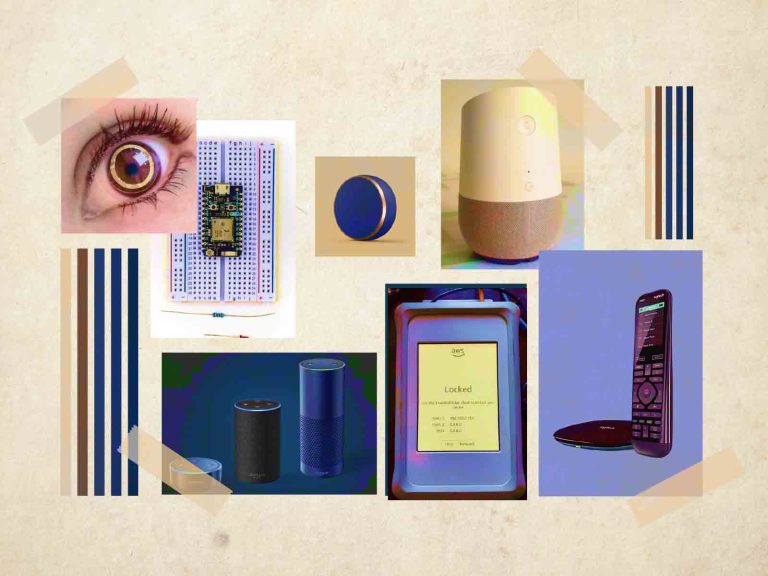It isn’t news that the Internet of Things (IoT) is revolutionising our lives in more ways than one – IoT is Everywhere. Initially, IoT was portable, then it eventually progressed to be a wearable, and currently, it’s implantable, creating a ubiquitous and connected universe and alongside transforming physical objects that surround us into an ecosystem of information that is rapidly changing the way we live. IoT technology has already changed when and where work is done in practically every industry. As a matter of fact, businesses are slowly transitioning toward the Internet of Everything (IoE), an unprecedented network connection that encompasses machines, individuals, processes and data that can have a huge impact in our daily lives.
Be it smart homes, smart cities, smart devices, and the automated workflow in various industries — IoT has become a mainstay and it’s evident that the reliance on the various IoT connected devices will continue to elevate. A decade ago there were about 500 million devices connected to the Internet. Studies from the market research firm IDC has estimated that by 2021, the number will grow nearly tenfold with approximately 50 billion devices, and the global IoT market is anticipated to be valued at more than US $1.4 trillion. While the future of IoT looks promising; it will see a lot of investment, growth, and widespread adoption in some major industries.
Having said that, let’s explore a few significant areas that have been transformed through IoT’s competitive advantage at the intersection of people, data and intelligent machines. Here are a few examples of how these industries have begun to harness the potential of IoT to the fullest.
Automotive
Driverless cars had been just a figment of our imaginations until recently. However, with IoT shaking up the automotive industry like never before, digital transformation has made its way in the automotive space. By facilitating human-to-human, machine-to-machine, and human-to-machine interactions, IoT seeks to expedite processes and enrich people’s lives.
Connected vehicles are now equipped with the ability to pick information from the surroundings, so much so that they can analyse data in real-time, providing the owner with diagnostic information to act upon.
- IoT has enabled smart cars with built-in sensors that aid in efficient parking, provide analytic data on maintenance, and predict collision avoidance.
- Connected cars send information to manufacturers with real-time data, sharing insights on developing more accurate predictive maintenance models – the speed of data allows them to respond quickly to any issues found.
- Far beyond relying on human memory and extensive tracking, connected cars come with an advantage of enabling quick communication between manufacturers and drivers on issues and reminders relating to servicing and maintenance.
- Telematics is yet another aspect that has found immense scope in the automotive industry. Family notification of vehicle collision, automated emergency calling and vehicle diagnostics and maintenance notifications are classic examples of its applications.
- Connected cars are equipped with technology that can trace and record driver habits and behaviour and transfer useful data to insurance companies for analysis. This makes for safer and more economical driving practices.
- In terms of the entertainment quotient, connected cars are an extension of providing both information and entertainment seamlessly, without extensive changes in the communication channels that people are generally used to. This adds a sense of personalisation to the entire driving experience.
Manufacturing
As one of the earliest adopters of IoT, the manufacturing industry has been a beneficiary of IoT by embedding sensor-based technology in their machines for decades. Based on a finding by Business Insider, global manufacturers will invest $70 billion in IoT solutions in 2020. With this trend and the huge promise that IoT offers, new data processing technologies and analytical forecasting models are available to enhance the entire manufacturing value chain, from concept to completion.
- Manufacturers across the world are poised to use analytics data tracked using connected devices to analyse processes and identify optimisation possibilities. Gaining insights early on can help anticipate possible issues and thereby prepare for certain outcomes. The cognitive predictive maintenance system that IoT offers will employ battery-operated acoustic sensors to process the audio signals of machines and hardware in real-time. That information is then processed and transmitted to a remote evaluation unit which can identify problems regarding the condition and performance of the equipment.
- The primary purpose of a condition-based maintenance system is that it can predict equipment failure. The use of IoT sensors in manufacturing equipment enables condition-based maintenance alerts. There are many critical machine tools that are optimised to function at a certain temperature range and within stipulated vibration parameters. IoT sensors are dynamic in that they monitor machines and send an alert when the equipment deviates from its prescribed parameters.
Smart Cities
We live in a world governed by our smartphones and our dependency on these devices is so enormous that we barely realise it. By harnessing the power of IoT, cities are evolving to become what are now called “smart cities”, through the aggregation and use of data meant to improve the lives of residents. The growing data revolution has paved the way for low-cost sensors, well within a securely protected system without comprising largely on public safety and individual privacy.
- IoT has the potential to transform the way cities consume water. Smart meters are equipped to improve leak detection and data integrity; prevent lost revenue due to inefficiency, and boost productivity by reducing the amount of time spent entering and analysing data. Also, these meters can be designed to feature customer-facing portals, providing residents with real-time access to information about their consumption and water supply.
- Energy-saving and sustainable practices are well within reach through IoT technology that makes it easier for buildings struggling with a legacy infrastructure. Smart building energy management systems, for instance, use IoT devices to connect disparate, nonstandard heating, cooling, lighting, and fire safety systems to a central management application. For instance, Chicago installed a network of interactive sensors to collect real-time data on the city’s environment, infrastructure and activity for research and public use. This initiative sought to basically act as a “fitness tracker” for the city, measuring factors that affect Chicago’s livability, such as climate, air quality and noise.
- By leveraging the power of IoT technology, smart transit systems may well be in place in order to provide integrated transport hubs seamlessly connected through multiple modes of transportation such as bus systems, metro systems, and so on. Even the monitoring of vehicles and pedestrian levels can optimise driving and walking routes.
In conclusion, it is clear that IoT continues to evolve and make its ways across several industries, enabling a seamlessly connected world. Ness is proud to work with our clients on a diverse range of forward-looking IoT projects, across sectors, to help them utilise the latest technologies and drive profitable growth.



















































































